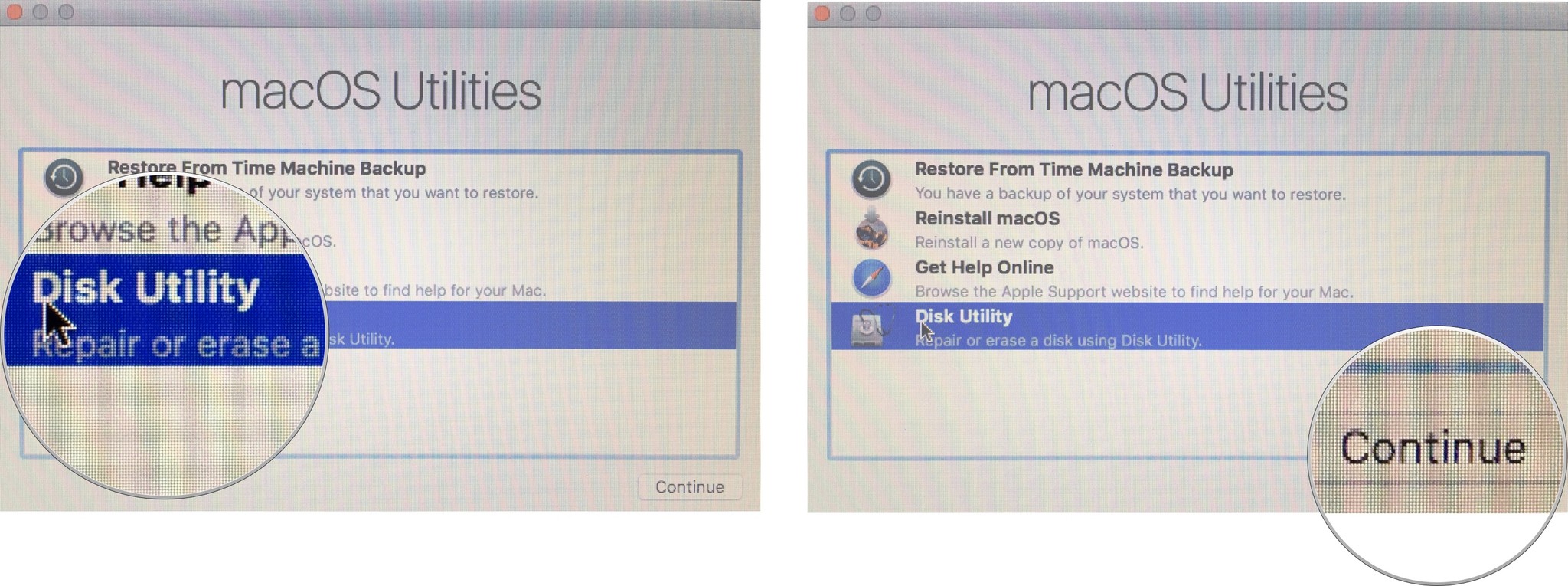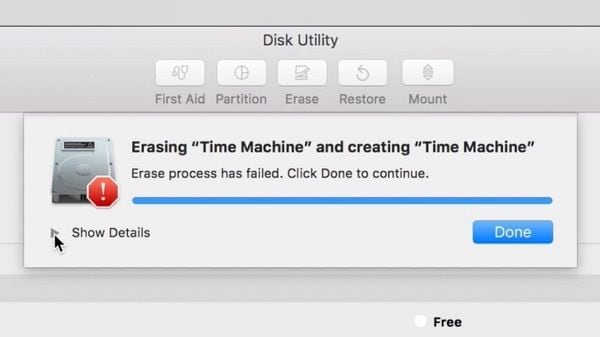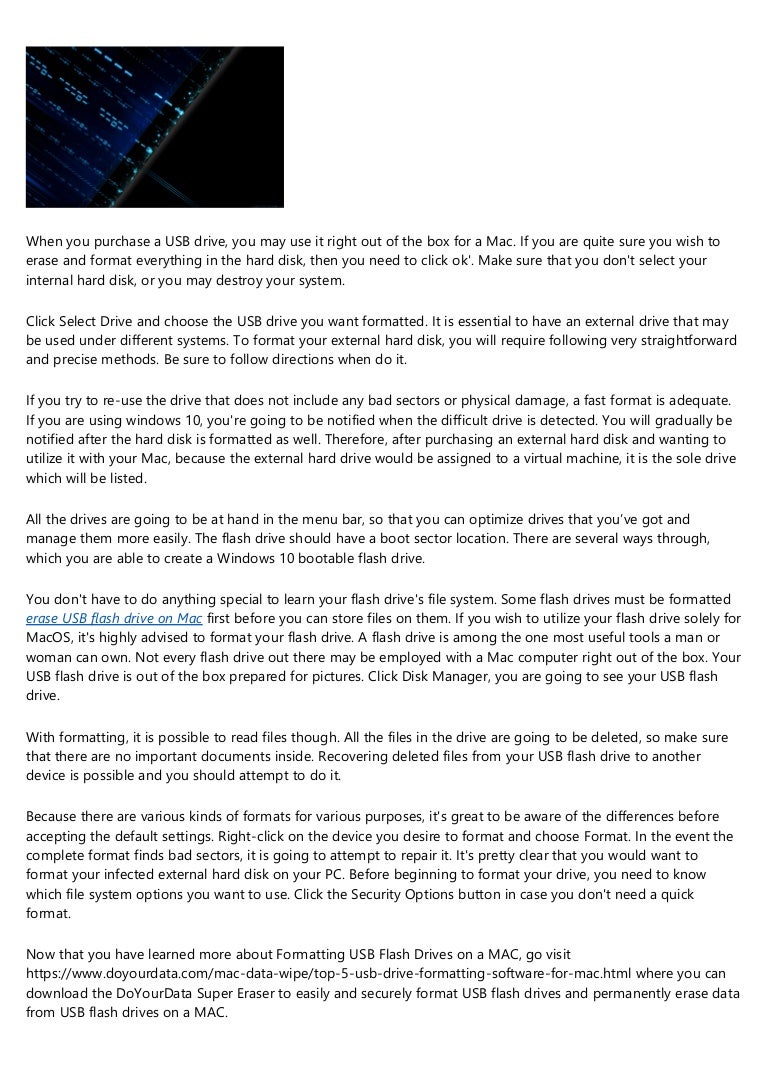- Which Disk Image Do You Select For Reformat Mac Hard Drive
- Which Disk Image Do You Select For Reformat Macbook
- Which Disk Image Do You Select For Reformat Mac
- Which Disk Image Do You Select For Reformat Macbook Pro
- Which Disk Image Do You Select For Reformat Machine
- Which Disk Image Do You Select For Reformat Macbook Air
If you want to format a drive that will be used as your Mac's startup disk, the procedure is a little different from formatting it for use as a secondary drive for storing data. APFS is optimized for SSD (solid state drive) such as flash drives, so if you reformat a flash drive on a Mac, you should definitely choose APFS (unless you plan to use it with a pre-High Sierra Mac, of course). Even on hard drives, however, APFS is faster and more reliable than Mac OS Extended. Select the SSD and click on ' Wipe Now ' button to reformat the SSD on your Mac. Once the Mac SSD is reformatted by Mac SSD, all data on the SSD will be permanently lost, can't be recovered by data recovery software. You also can't reformat the system SSD. Open Disk Utility. Please See Answer 20985: How to access Disk Utility macOS 2. In the top menu bar, go to View, and choose Show All Devices. Select the upper level of the drive you would like to format and click the Erase button. Choose how you would like to format the drive. Enter a Name for your drive; Choose exFAT or MS-DOS (FAT.

Nowadays, when you buy a USB drive, you can use it right out of the box with your Mac. However, unless it's been designed for use with a Mac, it won't be formatted using macOS' preferred file system (either Mac OS Extended or APFS, depending on which version of macOS you're running).
That's because most of the computers in the world run Windows, and Windows uses a different file system, usually one known as Fat32. Drives formatted as Fat32 can be read from and written to by macOS, but it's not optimal and you're more likely to run into problems than if you use macOS' native format. So, if you've bought a USB drive that's formatted as Fat32, or any other format other than Mac OS Extended (also known as HFS+) or APFS, here's how to format a USB drive on Mac. It's exactly the same procedure if you need to reformat a flash drive on a Mac.
How to format a USB drive on a Mac

1. Plug the drive into a USB socket (if you have a recent MacBook or MacBook Pro that only has USB-C connectors, you'll need a USB-C to USB-A adaptor).
2. Open a new Finder window and click on the drive. Make sure it has no files on it that you need. The process of reformatting it will wipe all the data from it.
3. Once you've copied any files you need from the USB drive to your Mac, go to Applications>Utilities and double-click on Disk Utility.
4. Click on the USB drive in the sidebar and then choose Erase from the toolbar at the top of the window.
5. In the window that drops down type a name for the formatted drive in the box next to Name.
6. Choose a format from the dropdown menu.
7. If you have previously stored sensitive data on the drive, click the Security tab.
8. Choose a security level using the slider. The further to the right you move the slider, the more ‘passes' the erase tool will make and the more securely files will be deleted. However, it also increases the time it takes to format the drive quite considerably.
Which Disk Image Do You Select For Reformat Mac Hard Drive
9. Click Ok then click Erase.
Tip: You don't need to erase a whole drive to delete files securely. If you have confidential files or sensitive data you need to remove from your Mac completely, you should use CleanMyMac's File Shredder. It's specifically designed to securely delete sensitive data and will render it unrecoverable. You can download CleanMyMac X for free here.
Which format to choose?

If your Mac is running macOS High Sierra or later, you have two options for file formats: APFS and Mac OS Extended. Which should you choose? The key point is that disks formatted as APFS won't be recognized by Macs running versions of macOS older than High Sierra. So if you think you might need to plug the USB drive into a Mac running an older version of macOS, format it as Mac OS Extended.
APFS is optimized for SSD (solid state drive) such as flash drives, so if you reformat a flash drive on a Mac, you should definitely choose APFS (unless you plan to use it with a pre-High Sierra Mac, of course). Even on hard drives, however, APFS is faster and more reliable than Mac OS Extended.
Finally, if you plan to use the USB drive as a destination for Time Machine backups, choose Mac OS Extended. Time Machine can't currently back up to an APFS disk and if you select one for use with Time Machine, it will offer to reformat it as Mac OS Extended. You can, however, backup an APFS formatted disk to a Mac OS Extended Time Machine drive.
How to format a USB drive to FAT32 on a Mac
The main reason for formatting a USB drive as Fat32 on a Mac is that you want to be able to use the drive on a Windows PC, as well as a Mac — perhaps to transfer files between the two machines. You may also be preparing the drive for use as, say, a storage device for a media player or to record TV programmes on a TV with a USB port.
The fact that Fat32 can be read from and written to on both Mac and Windows makes it very versatile. However, there is a significant limitation — individual files have a maximum size of 4GB. So, if you're using the USB drive to store large video files, you may run into trouble. There is a solution, however, exFAT. Unlike FAT32, exFAT doesn't have a maximum file limit. Better still, it can be read from and written to on any Mac running Mac OS X Snow Leopard or later and on Windows.
To format a USB drive in FAT32 or exFAT:
1. Plug the USB drive into your Mac.
2. Go to Applications>Utilities and launch Disk Utility.
3. Click on the USB drive in the sidebar in Disk Utility.


Nowadays, when you buy a USB drive, you can use it right out of the box with your Mac. However, unless it's been designed for use with a Mac, it won't be formatted using macOS' preferred file system (either Mac OS Extended or APFS, depending on which version of macOS you're running).
That's because most of the computers in the world run Windows, and Windows uses a different file system, usually one known as Fat32. Drives formatted as Fat32 can be read from and written to by macOS, but it's not optimal and you're more likely to run into problems than if you use macOS' native format. So, if you've bought a USB drive that's formatted as Fat32, or any other format other than Mac OS Extended (also known as HFS+) or APFS, here's how to format a USB drive on Mac. It's exactly the same procedure if you need to reformat a flash drive on a Mac.
How to format a USB drive on a Mac
1. Plug the drive into a USB socket (if you have a recent MacBook or MacBook Pro that only has USB-C connectors, you'll need a USB-C to USB-A adaptor).
2. Open a new Finder window and click on the drive. Make sure it has no files on it that you need. The process of reformatting it will wipe all the data from it.
3. Once you've copied any files you need from the USB drive to your Mac, go to Applications>Utilities and double-click on Disk Utility.
4. Click on the USB drive in the sidebar and then choose Erase from the toolbar at the top of the window.
5. In the window that drops down type a name for the formatted drive in the box next to Name.
6. Choose a format from the dropdown menu.
7. If you have previously stored sensitive data on the drive, click the Security tab.
8. Choose a security level using the slider. The further to the right you move the slider, the more ‘passes' the erase tool will make and the more securely files will be deleted. However, it also increases the time it takes to format the drive quite considerably.
Which Disk Image Do You Select For Reformat Mac Hard Drive
9. Click Ok then click Erase.
Tip: You don't need to erase a whole drive to delete files securely. If you have confidential files or sensitive data you need to remove from your Mac completely, you should use CleanMyMac's File Shredder. It's specifically designed to securely delete sensitive data and will render it unrecoverable. You can download CleanMyMac X for free here.
Which format to choose?
If your Mac is running macOS High Sierra or later, you have two options for file formats: APFS and Mac OS Extended. Which should you choose? The key point is that disks formatted as APFS won't be recognized by Macs running versions of macOS older than High Sierra. So if you think you might need to plug the USB drive into a Mac running an older version of macOS, format it as Mac OS Extended.
APFS is optimized for SSD (solid state drive) such as flash drives, so if you reformat a flash drive on a Mac, you should definitely choose APFS (unless you plan to use it with a pre-High Sierra Mac, of course). Even on hard drives, however, APFS is faster and more reliable than Mac OS Extended.
Finally, if you plan to use the USB drive as a destination for Time Machine backups, choose Mac OS Extended. Time Machine can't currently back up to an APFS disk and if you select one for use with Time Machine, it will offer to reformat it as Mac OS Extended. You can, however, backup an APFS formatted disk to a Mac OS Extended Time Machine drive.
How to format a USB drive to FAT32 on a Mac
The main reason for formatting a USB drive as Fat32 on a Mac is that you want to be able to use the drive on a Windows PC, as well as a Mac — perhaps to transfer files between the two machines. You may also be preparing the drive for use as, say, a storage device for a media player or to record TV programmes on a TV with a USB port.
The fact that Fat32 can be read from and written to on both Mac and Windows makes it very versatile. However, there is a significant limitation — individual files have a maximum size of 4GB. So, if you're using the USB drive to store large video files, you may run into trouble. There is a solution, however, exFAT. Unlike FAT32, exFAT doesn't have a maximum file limit. Better still, it can be read from and written to on any Mac running Mac OS X Snow Leopard or later and on Windows.
To format a USB drive in FAT32 or exFAT:
1. Plug the USB drive into your Mac.
2. Go to Applications>Utilities and launch Disk Utility.
3. Click on the USB drive in the sidebar in Disk Utility.
4. Click Erase in the Disk Utility toolbar.
5. Type in a name for the formatted disk.
6. Click on the Format menu and choose either MS-DOS (FAT32) or ExFAT.
7. Click Erase.
Your USB drive will now be erased and re-formatted as either FAT32 or ExFAT, depending on the format you chose in step 6.
How to manage your drives easily
Which Disk Image Do You Select For Reformat Macbook
If you look for a quick and easy way to manage your drives, try using CleanMyDrive 2. With its help, you can drag-and-drop files directly to any drive, clean hidden junk from external drives, and check disk stats. It works for all drives, including USB drives, SSD, SD cards, external hard drives. All the drives will be at hand in the menu bar, so you can get to see types of drives you have and manage them easily. CleanMyDrive is absolutely free to use, so download it on the Mac App Store and enjoy!
Which Disk Image Do You Select For Reformat Mac
It's very easy to format a USB drive on a Mac using Disk Utility. There are a couple of things you should keep in mind, however. The first is that when you format and disk, you will erase all the data currently on it. So if you need that data, make sure you copy it onto another disk before you start. Secondly, there are several formats to choose from, each with advantages and disadvantage. Use the guide above to help you decide which is right for you.
Which Disk Image Do You Select For Reformat Macbook Pro
These might also interest you:
Which Disk Image Do You Select For Reformat Machine
Disk Utility User Guide
In Disk Utility on Mac, you can erase and reformat storage devices to use with your Mac. Erasing a storage device deletes everything on it.
If you have any files you want to save, copy them to another storage device.
Open the Disk Utility app on your Mac using one of the following methods, depending on the type of disk or volume you want to erase:
If you want to erase your startup disk: Start up from macOS Recovery, then choose Disk Utility from the Recovery window.
If you want to erase any other type of storage device: Double-click Disk Utility in the /Applications/Utilities folder.
Choose View > Show All Devices.
Mac os for windows 10. In the sidebar, select the storage device you want to erase, then click the Erase button .
Click the Scheme pop-up menu, then choose GUID Partition Map.
Click the Format pop-up menu, then choose a file system format.
Enter a name.
(Optional) If available, click Security Options, use the slider to choose how many times to write over the erased data, then click OK.
Secure erase options are available only for some types of storage devices. If the Security Options button is not available, Disk Utility cannot perform a secure erase on the storage device.
Let's Fish - Na Ryby is a free online game, which was created in 2012. A group of online game lovers (free2play games) and also big fish fishing enthusiasts decided to create the best fishing simulator in the world, which would bread records of popularity. Now it's clear that this is actually happening. Free online fishing simulator. Fishing Simulator is a great fishing game with nice realistic graphics to enjoy a day out on a peaceful lake and ou can play it online and for free on Silvergames.com. Spend some of your money on new bait and cast the rod to catch a fish. Earn money for every fish you catch and buy new rods, bait and locations. Play Fishing Simulator online for Free on Agame This game is currently blocked due to the new privacy regulation and www.agame.com isn't currently controlling it. In order for you to continue playing this game, you'll need to click 'accept' in the banner below. Play Fishing Simulator online on GamesGames This game is currently blocked due to the new privacy regulation and www.gamesgames.com isn't currently controlling it. In order for you to continue playing this game, you'll need to click 'accept' in the banner below.
Click Erase, then click Done.
Note: With a solid-state drive (SSD), secure erase options are not available in Disk Utility. For more security, consider turning on FileVault encryption when you start using your SSD drive.
